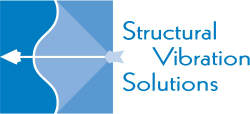Structural Vibrations has introduced the ARTeMIS Modal 6.0, which is a new module for Experimental Modal Analysis (EMA) due for release in the second quarter of this year.
The new module will support both hammer and shaker tests that deploy frequency response functions (FRFs) obtained in one of the following ways:
- Direct uploading of the FRF’s from universal file format – some of ARTeMIS Modal tasks are either hidden or simplified. This also counts for the prepare data task, as there is no signal processing to do.
- Upload of simultaneously measured input and output time histories into the manage measurement task, followed by the estimation of the FRF’s using H1, H2, or Hv estimators. This is accomplished in the prepare data task.
- Use the ARTeMIS Modal data acquisition plugins to measure input and output simultaneously, followed by the estimation of the FRF’s using H1, H2 or Hv estimators.
The experimental tests presented here have been conducted at TH Ingolstadt, Faculty of Mechanical Engineering, Germany, under the guidance of Professor J Bienert.
The experimental campaign consists of impact (hammer) testing of an Audi TT car body.
The car body was mounted free on four air cushions. Four references respectively impact points were excited with 14 accelerometers as responses. The data acquisition and processing of the FRF’s were made with a 24-channel data acquisition system. The FRF’s were stored in the four separate universal file format files (Audi_TT_FRF_runX.unv) along with test geometry in its own file (Audi_TT.unv).
Importing FRF’s into ARTeMIS Modal
Importing the FRF’s into ARTeMIS Modal starts with creating a new project using a universal file format.
Once the files are uploaded, the geometry and FRF’s can be seen in the simplified prepare data task. The data organiser contains all four impact tests listed below each other, and the Geometry window visualise the positions and the directions of the response and reference channels. All the impact positions can be viewed by selecting the first item ‘All Test Setup’ in the Data Organizer.
The 14 response accelerometers are seen in blue and the impact positions, indicated by a hammer symbol, are coloured green.
Estimating Modes using Rational Fraction Polynomial – Z Domain
The modal parameters of the car body are computed with a Rational Fraction Polynomial estimator working in Z-domain. This estimator has been developed in cooperation with Politecnico di Torino, Dynamics and Identification Research Group (DIRG) at Department of Mechanical and Aerospace Engineering, Italy, the I4S Team at Inria, France and Aalborg University, Department of Civil Engineering, Denmark.
The estimator has been adapted, so it is operated in nearly the same way as the Stochastic Subspace Identification methods used for Operational Modal Analysis in ARTeMIS Modal.
The work flow is as follows:
- Select a maximum model order to initialise the estimation of the system matrices of the highest dimension for the subsequent computation of a lower model orders.
- Select the desired frequency band
- Select a specific range of the model orders by dragging the mouse down on the stabilisation diagram, or simply click the ‘Estimate Models’ button to estimate all the model orders.
- Stable modes are found by a study of the natural frequencies, damping ratios and mode shapes (MAC and maximum modal complexity).
- Global modes are estimated based on the stable modes.
The analysis of the experimental test of the Audi TT in the frequency ranges from around 4Hz up to 140Hz. The maximum model order was set to 80, however, only models up to 60 were estimated.
Validating modes with other estimators
The modes obtained from the RFP-Z estimator are validated using the standard tools available in ARTeMIS Modal. By selecting the Validation Task, the modes can be compared with other estimators, as well as imported results from any other modal analysis tools.
Below we are comparing the RFP-Z modes with the modes obtained with a simple peak-picking tool already available in ARTeMIS Modal. It is based on the peak picking on the Complex Mode Indicator Function (CMIF).
User training course
The next user training session is due to take place on 7-8 May at the Hotel SANA Rex, Lisbon, Portugal. The sign-up deadline is 1 March.
This two-day course is for new and experienced users that would like to be updated on operational modal analysis technology, as well as the latest features of ARTeMIS Operational Modal Analysis software.
Both days we start at 9:30 and end at 17:00 on the first day and at 16:00 on the second. There will be lunch and coffee breaks during the day and free WiFi access. The course instructor is Structural Vibration Solutions A/S CEO Dr Palle Andersen.
For more information, please contact the company via the enquiry form.

